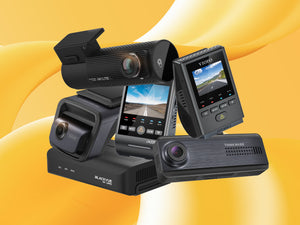In our decade-long experience of carrying dash cams, we have witnessed how dash cam technology has advanced at such a rapid pace. From VGA to 4K, built-in memory to Cloud storage and more, the level of resolution and features has skyrocketed.
Many of us are eager to upgrade in order to gain access to these features, but looking at the hardware of the dash cam, there's a major factor here that’s worth considering: should you get a dash cam with a lithium ion battery, or a supercapacitor?
Here at BlackboxMyCar, nearly all our dash cams - from VIOFO, BlackVue, Thinkware, and FineVu - are powered by supercapacitors. We think having one instead of a lithium-ion battery is a non-negotiable used in other brands such as Nextbase, Nexar, and Garmin.
In this article, we will take a look at the differences between a lithium battery and a supercapacitor - the pros and cons of each battery, how it affects the performance of the dash cam, and why we at BlackboxMyCar stand by Super Capacitor dash cams as the way forward.



